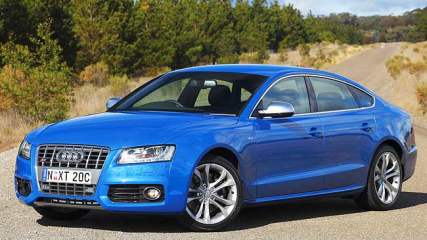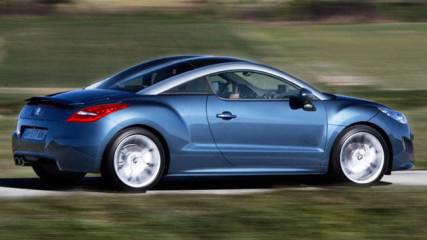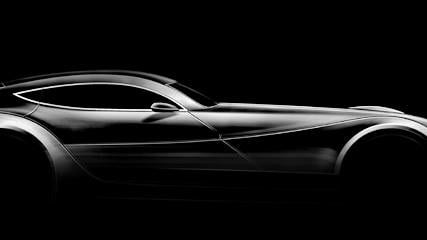Audi S5 2010 Review
By Neil McDonald · 08 Jul 2010
Another piece of the Audi's performance puzzle has slotted into its ever-growing ranks. The German carmaker's S5 Sportback has arrived to join the S4 and S5 Cabriolet. The sports-tuned road rocket shares the same supercharged 3.0-litre V6 as the S4 and S5 cabrio and is mated to Audi's quattro all-wheel drive system.PRICING AND MARKETAt $129,300, it has the Mercedes-Benz CLS and BMW 5-Series GT firmly in its sights. Not surprisingly, Audi Australia managing director, Uwe Hagen, reckons the newest S5 is a great addition to the range."It is not only practical enough for daily use, it is also sporty and fun to drive," he says. Customers are always looking for a benchmark experience, he says. "And we intend to fulfil this with emotional, technologically-advanced products," he says.The S5 is the latest in a long line of new models - 42 in all - destined to hit the roads by 2015. With a projected 10 sales a month, Audi believes S5 Sportback sales will make up a third of S5 sales locally and around 10 per cent of all Sportbacks. It joins the S3, S4 and S5 cabrio as an exclusive niche performance car.FIT-OUT AND EQUIPMENTLike the rest of the Sportback range, the S5 gets a coupe-like silhouette and four frameless doors. Inside, there are electric S-design sport seats covered in Silk Nappa leather, the choice of black or silver roof lining and brushed aluminium inlays.The pointers in the instrument cluster are illuminated white and the ‘S5’ logo flashes up on the dashboard when the car is started.Xenon-plus headlights and LED daytime driving lights are standard, along with the usual S markings like the alloy exterior mirrors, sports steering wheel with paddle shifters, tyre-pressure warning system, 18-inch alloys, quad exhausts and discrete S5 badging. The front mudguards are also light-weight aluminium.Buyers get a a comprehensive safety kit, high-grade navigation system with voice control, keyless entry and start, parking sensors and a premium stereo along with Bluetooth and the multi-media plug ins.DRIVETRAINThe potent 3.0 TFSI engine packs 245kW/440Nm and is mated to a seven-speed DSG gearbox. It will hit 100km/h in 5.4 seconds and has a top speed of 250km/h. The V6 consumes 9.4 litres/100km and emits 219g/km of CO2.DRIVINGThe A5 Sportback has finally found its mojo. The car had the looks but now its performance matches those looks, courtesy of the sweet-revving supercharged V6. Although we miss the brutal sound of the 4.2-litre V8 of previous S models, the V6 is muscular enough to keep things interesting.In place of the burbling V8 is a linear, slightly mechanical whine of the V6. It is efficient and reasonably frugal but without the manic urgency of the V8. If you do select the S5 quattro we'd also tick the options box for either the $2800 active dampers or the top-end Drive Select system, which costs $6900.In the S5 Sportback it adds an active suspension, dynamic steering and sports differential, which may not sound much but it's how it works that impresses. Working in conjunction with the all-wheel drive, which splits drive 40/60 front to rear, Drive Select makes the S5 more precise and a more enthusiastic point-to-point drive.In slippery conditions or hard driving, the all-wheel drive system can push as much as 85 per cent of the drive to the rear wheels. Throw in the sports differential, which works on the rear axle to shift torque across the axle, it helps reduce understeer and oversteer. Think of it as a sophisticated limited slip differential.We drove an S5 Sportback without the system and would suggest that if you're planning to spend $129,300 on the car, an extra few thousand will deliver a far better driver's car. The supercharged V6 has plenty of punch low down and the seven-speed gearbox is lightning quick but Drive Select transforms the car.The S5 also deserves more communicative and slightly meatier steering, but that's a problem with most Audis. However, the S5 treatment of the Sportback is a perfect fit.AUDI S5 SPORTBACKEngine: 3.0-litre supercharged V6Price: $129,300Power: 245kW at 7000 revsTorque: 440 from 2900 to 5300 revsEconomy: 9.4 litres/100km0-100km/h: 5.4 seconds















